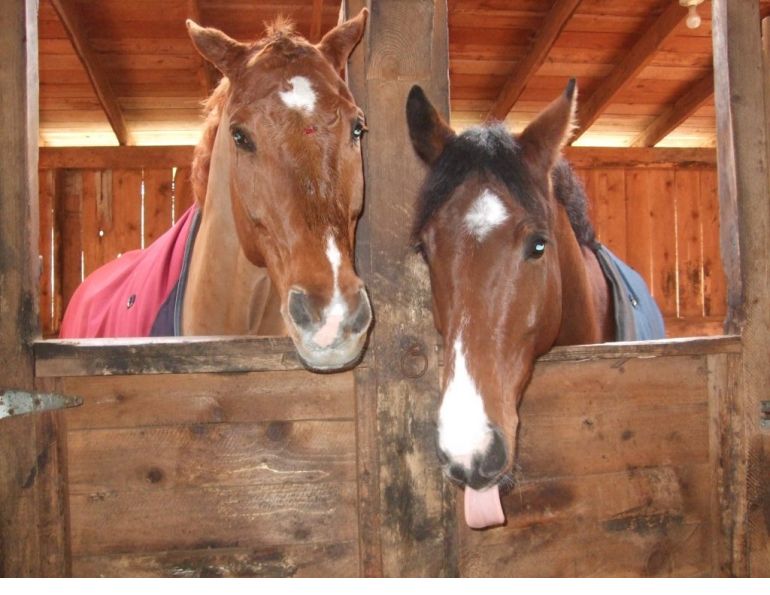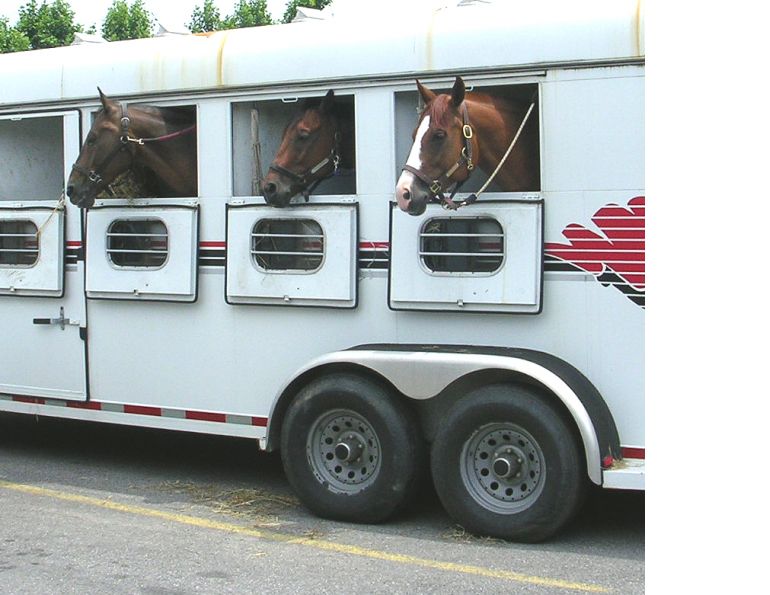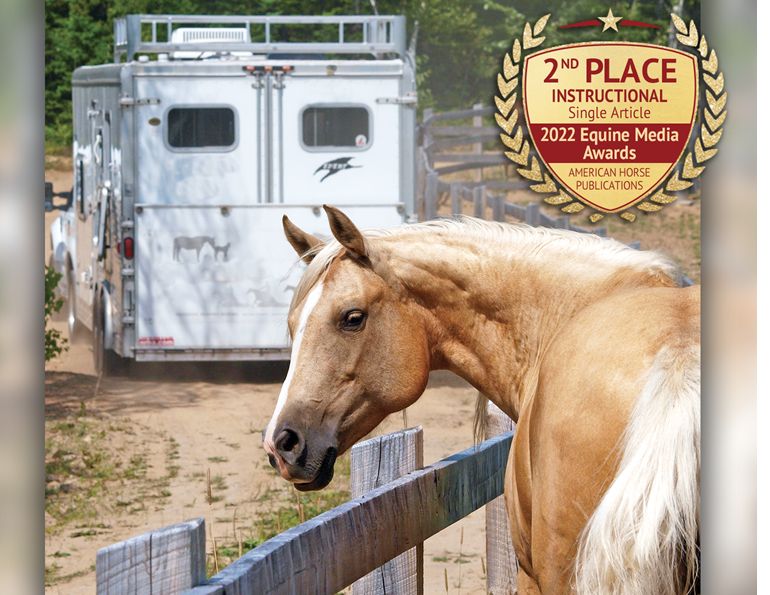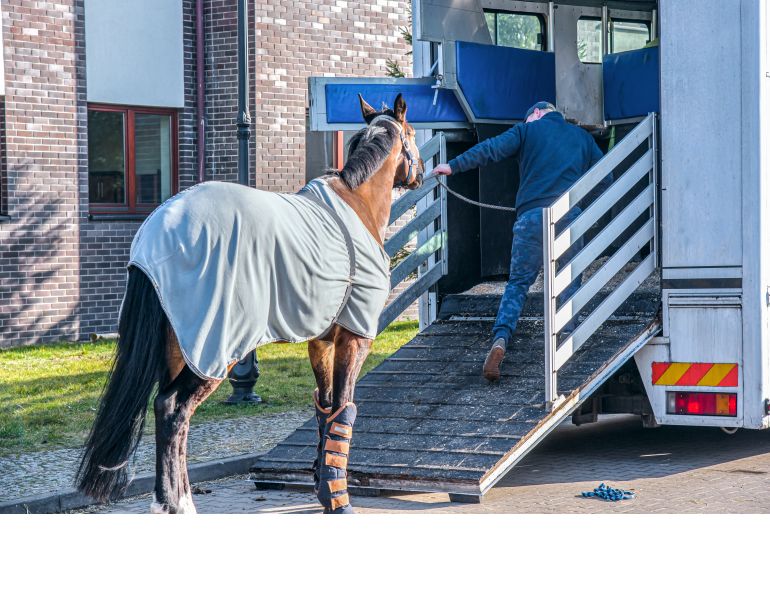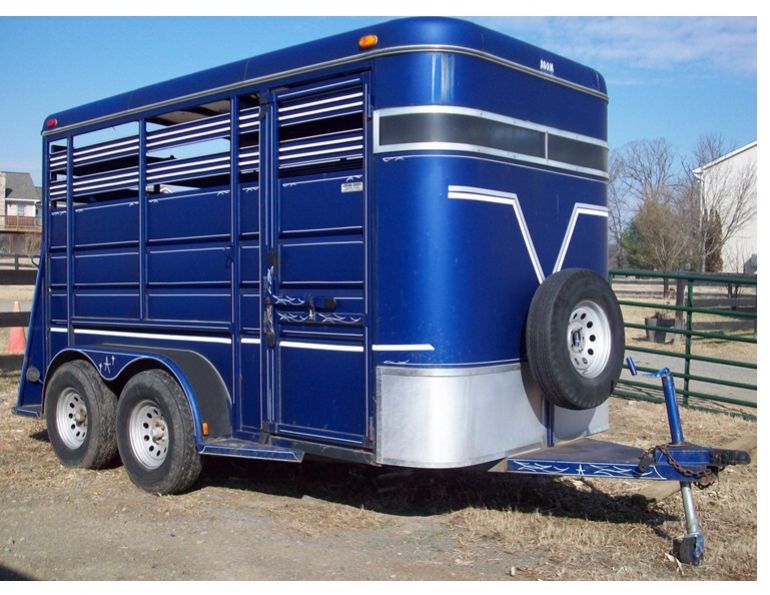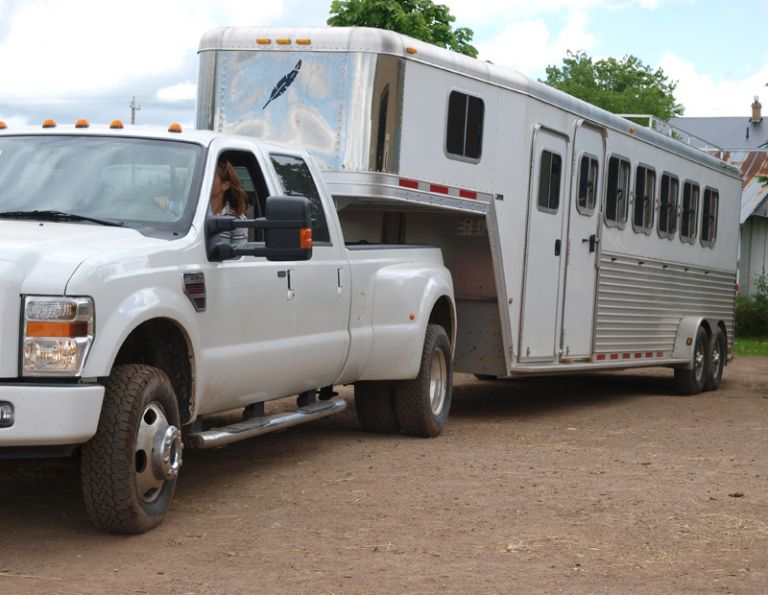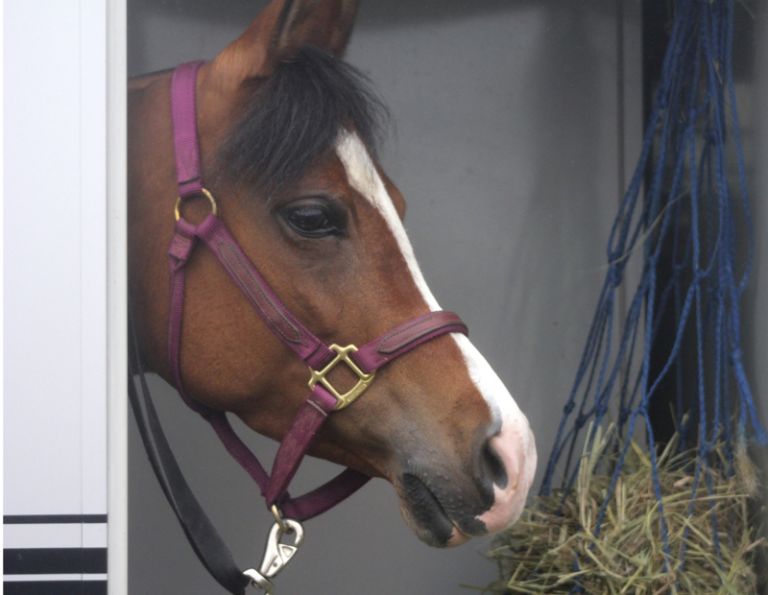By Kevan Garecki
Horse trailers are a substantial investment — not only in terms of cost but, most essentially, in the horses that rely on us to keep them safe and comfortable. A few thoughtful steps will prepare your trailer for winter and prevent headaches in the spring, extend the life of your trailer, and enhance the safety of your horses.
A complete clean of the trailer is the first step to prepare it for storage. A clean trailer not only makes the job easier but can also help you spot issues that might otherwise go unnoticed. Remove and sanitize the floor mats, as well as any other removable components such as dividers, chest bars, and butt bars. Be sure to wash out the interior thoroughly, and allow everything to dry well prior to reinstalling the mats. If your trailer has wooden plank flooring, this step is particularly important to prevent rot, which can weaken the floor’s structural integrity. Drying the interior completely also reduces condensation, which helps prevent metal corrosion, oxidation, mold, and mildew buildup.
When it's time to return the trailer to service in the spring, you might find that what was once a slightly sticky hinge or latch is now completely seized up after a long winter of exposure to moisture. This issue is especially common in coastal areas where higher humidity levels are frequent. To prevent this, lubricate finer components such as locks, latches, and deadbolts. These parts will benefit from a protective coating of graphite or white lithium grease. For larger moving parts like latches, ramp and door hinges, a heavier aerosol lubricant such as Fluid Film® or Lubriplate is a good choice. For heavier components like hitch balls and weight equalizer bars, apply high-pressure grease sparingly to keep them moving smoothly and protected from corrosion.
With these steps, your trailer will be ready to go when the weather warms up, and your horses will stay safe and secure on every trip.
Related: Help to Extend Your Horse Hay Supply

Proper ventilation, access to good quality forage and fresh water, and appropriate blanketing will make your horse more comfortable when travelling in the winter. Photo courtesy of Kevin Garecki
Electrical components are susceptible to corrosion while in storage; a liberal coating of silicone spray applied to the truck and trailer electrical plugs will help to slow the process. It’s a good idea to repair any inoperative lights before placing the rig in hibernation for winter – you’re likely to forget about them seven months later when spring rolls around. When returning the rig to service next year, you may be faced with misbehaving trailer brakes and other mysterious electrical gremlins. The places to look for problems are the electrical plugs, the breakaway switch, and any junction boxes, fuse panels, or circuit breakers the truck and trailer might be equipped with. Many newer breakaway systems are powered by a single use dry cell battery, which must be inspected at least once a year. Few dry cell batteries have a life span of more than a year or two, so unless your rig is almost new, chances are pretty good you’ll need a new battery. Consider replacing the dry cell unit with an RV style deep cycle battery. This will offer independent power to trailer lights and accessories, and provide significantly higher emergency reserves to the breakaway system.
If the trailer is parked outdoors, cover the tires when not in use to reduce weathering to the sidewalls. Tires typically lose two to five pounds per square inch (PSI) per month due to porosity. Fill them up to their maximum safe inflation pressure before parking the trailer at the end of the season, and always check pressures with a reliable gauge before returning the rig to service each year. If you don’t think tires deserve much attention until they go flat, consider this: your tires are the only contact between the ground and your precious cargo!
Related: Incidents on the Road
We may not always have the luxury of choosing the best storage location for our trailers, but here are a few hints to keep in mind:
- Avoid predominantly damp or shady areas as your trailer will suffer from increased condensation, mildew, metal oxidization, and tire degradation from the moisture.
- Bumper-pull rigs should have the tongue covered during storage to lessen corrosion inside the jack mechanism.
- Store on level ground, but use the jack to keep the trailer a little “nose high”, which minimizes water pooling and allows interior condensation to run off the ceiling.
- Consider emergencies; you never know when you’ll need access to your rig in a hurry.
- Ventilation is important. Open one or two windows or vents a little to avoid trapping moisture inside.
- Periodically check the trailer over while it’s in storage. Open doors and windows if weather permits and inspect wheel blocks, jacks, and other components for corrosion or cold weather damage.
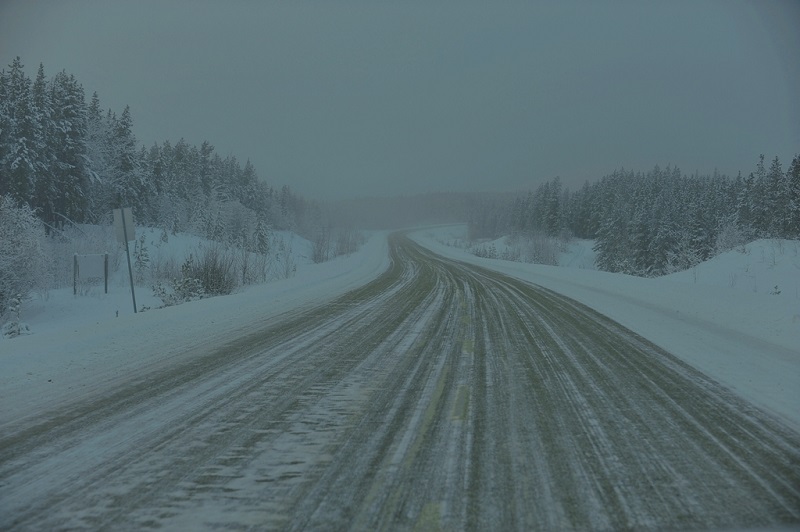
Those who brave the elements all year long know that safety margins shrink as weather deteriorates. Sometimes the wisest choice is simply to postpone a trip until conditions improve. Photo courtesy of Kevin Garecki
Interior condensation can be reduced by adding a moisture trap such as the Dri-Z-Air®. If the trailer is parked in extremely damp or cold conditions, adding a small electrical auxiliary heater can make a big difference come spring. Care must be taken when choosing and routing extension cords for such a purpose. The longer the cord, the heavier it must be in order to handle the electrical load. Make sure the cord is not kinked, pinched, or routed over sharp edges that can cause frays and possible shorts, which can result in a fire. A small 1500 watt ceramic heater can keep a large tack room dry during even the soggiest West coast winter.
Related: Your Horse's Winter Energy Needs
Tow vehicles often serve double duty and remain active throughout the year. Those that are parked along with the trailer need a bit of TLC as well. The same consideration for trailer body, interior components, tires, and electrical parts holds true for the tow vehicle. Consider fuel tanks by adding appropriate winterizing agents to the fuel. This can eliminate fuel system issues during trailering season. Most vehicles built after 1995 incorporate some level of computerization into the fuel, emissions, braking, and other critical systems. These computers require constant power at very low amperage. This steady draw can drain batteries completely over long periods. Consider connecting a low amperage trickle charger to the battery of the tow vehicle for a day or so every month. This can reduce start-up issues in the spring, and possibly extend the life of other electrical components such as the alternator.
Those who must brave the elements with their truck and trailer all year long should know that safety margins shrink exponentially when the weather deteriorates. Sometimes the wisest choice is to postpone the trip until conditions improve. Before contemplating a drive in poor weather, consider this: there is nothing in a horse’s instinctual response mechanism that can help him in the event of a crash. In other words, your horse’s life is utterly dependent upon your judgment and experience.
Related: Questions to Ask a Commercial Transporter
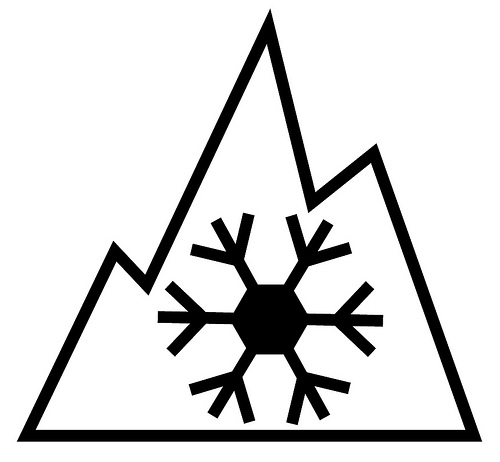
Snow tires can be identified by the snowflake logo, as required by Transport Canada. Photo courtesy of Transport Canada
There’s an old saying: “Judgment is what we get from experience; experience is what we get from poor judgment.”
Trip planning is always important, but is especially critical in harsh conditions. Check local weather forecasts for your destination and for locations along your route. Pay particular attention to mountain passes, areas with significant snowfall, and remote stretches of road. Weather can change suddenly, especially in mountainous regions, so check weather reports often. Most provincial transportation ministries have websites offering road and weather information and often have mobile-friendly versions that can be accessed easily with smartphones. Remember that trucks pulling gooseneck trailers fall under the heavy trailer category in most provinces, and are therefore subject to the same regulations as heavy trucks. The use of tire chains is mandatory when indicated.
Getting your trailer ready for winter is all about preparing for the worst. Pack spare tires, light bulbs, fuses, drive belts, and anything else that could burn out, wear out, or snap. If you’re not mechanically inclined, ask your local repair shop to show you how to perform some basic fixes, such as changing a headlight, fuse, or tire. Pack an emergency kit with a blanket, spare gloves or mitts, flashlight (with extra batteries), a shovel, energy bars, and bottled water, matches, and camp fuel. Remember to bring extra clothes for warmth! These are recommended as general safety guidelines, but there are many regionally specific precautions that are beyond the scope of this article.
Related: How To Ready Your Horse Trailer for Spring Towing
In winter, install four winter tires regardless of whether your vehicle is a four- or two-wheel drive vehicle. Winter tires handle differently than summer or all-season tires. Mixing these designs can make the vehicle handle unpredictably in bad weather – which not the time you want your truck to develop a mind of its own! All-season tires are meant for general driving and are not intended for use on snow or ice. They are an acceptable alternative for those living in temperate areas, specifically places that get very little or no snow at all. All-season tires have poorer traction on snow and ice. They will also become harder in cold weather, which negatively affects the handling of the vehicle. When snow flies, it’s time for snow tires! In many regions, snow tires are required by law between October and April. If you are involved in a crash and are using all-season tires in snowy conditions, insurance companies reserve the right to deny your claim. You can automatically be found at fault, making you liable for other damages, and will be required to repay recovery and towing expenses.

Your horse should be dressed for winter transport the same way he would be for turnout. Photo: Robin Duncan Photography
Horses inside a trailer need a constant supply of fresh air, but during winter we must be mindful of wind chill factors. Stock trailers may need to have open sides covered in order to lessen the amount of cold air entering the trailer. Keep roof vents open towards the rear, prompting increased airflow at the head level without significantly lowering the temperature on the floor. In sub-zero temperatures the floor can become much colder than the rest of the trailer. Bedding in livestock trailers is required by law, and in winter adequate bedding is essential and can protect against frostbite and hypothermia. Dress your horse for loading and transport in the same manner as you would for turning him out during winter. Dressing Dobbin in a blanket for the first time just prior to being transported can actually cause him to lose body heat. Horses have an amazingly complex heat control system that redirects blood flow and controls tiny muscles in the skin. These muscles raise the hair to trap insulating air between the coat and the skin. Placing a blanket over a horse with a winter coat flattens the hair and can cause the horse’s natural thermostat to malfunction.
There is little need to adjust feeding regimens during winter unless the horse has a pre-existing condition that dictates such a measure. Withholding grain during the 12 hours prior to loading is recommended. The stress of transport can slow or even halt gut motility, and grain fermenting in a slow hindgut has caused many an episode of colic. If you’re worried about keeping your horse warm when it’s snowy, increasing the fiber intake will do more to stoke his internal furnace than anything else. Digesting forage generates far more internal heat than digesting grain or other concentrated feeds. Water intake is always a challenge while transporting horses, but extreme temperatures can turn that challenge into a nightmare. A heated water tank in your trailer allows you to offer your passengers water that is at room temperature, which will help increase their water intake. Few folks go to such lengths and so the next best option for a long winter trip is to fill a large container (such as a jerry can that has not been used for fuel or the big blue containers used for camping) with water and keep it in the cab of the truck or other heated area. This has the added benefit of offering the horses water they are familiar with.
We arm ourselves against winter, and it only makes sense to do the same for our trailer rigs. There are many benefits to doing so, including an extended life for your trailer, easier operation when the rig is returned to service, fewer breakdowns during the towing season, and most importantly, a safer and more comfortable ride for your precious cargo!
"Every mile is two in winter." - George Herbert
Related: Horse Trailer Accidents on the Road
Related: Winterize Your Horse Barn
Main Photo: Getting your trailer ready for winter is all about preparing for the worst. Trailer maintenance, especially during the cold and wet winter months, can extend the life of your trailer and provide your horse with a safer mode of transportation. Credit: Courtesy of Kevan Garecki.







